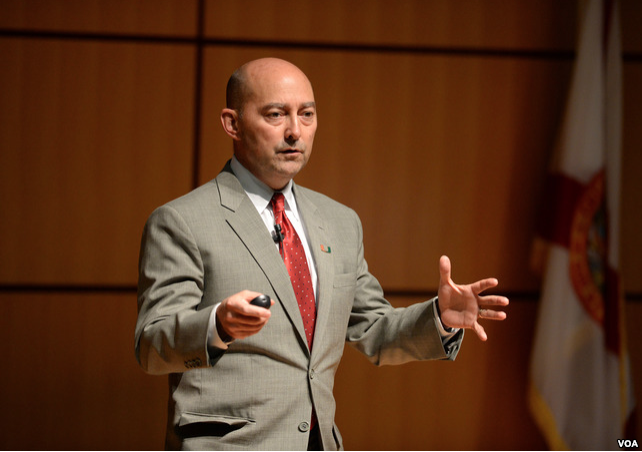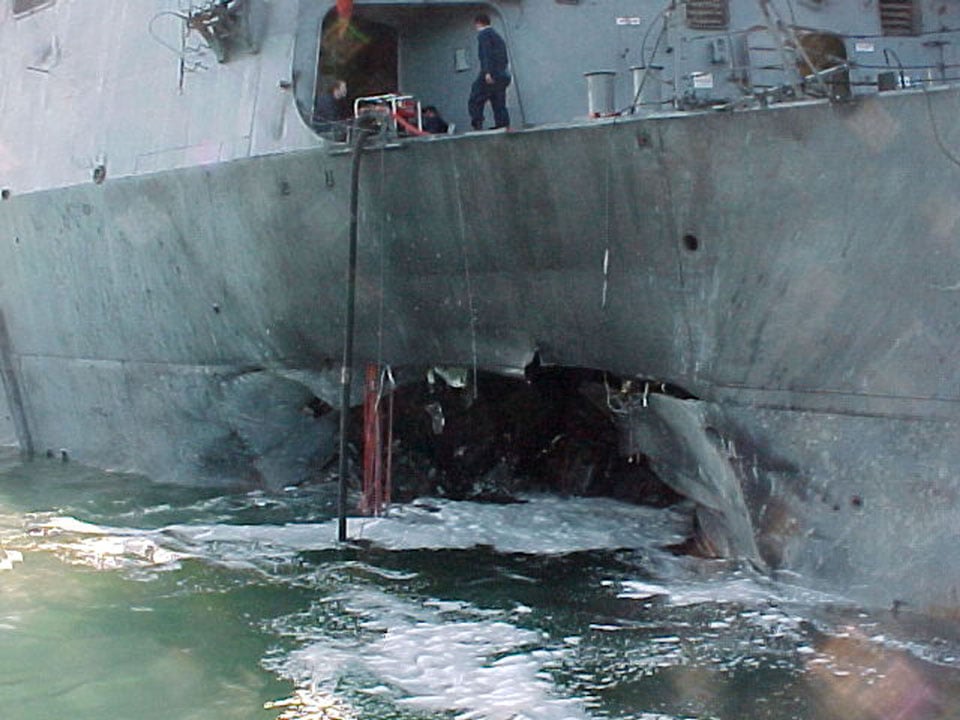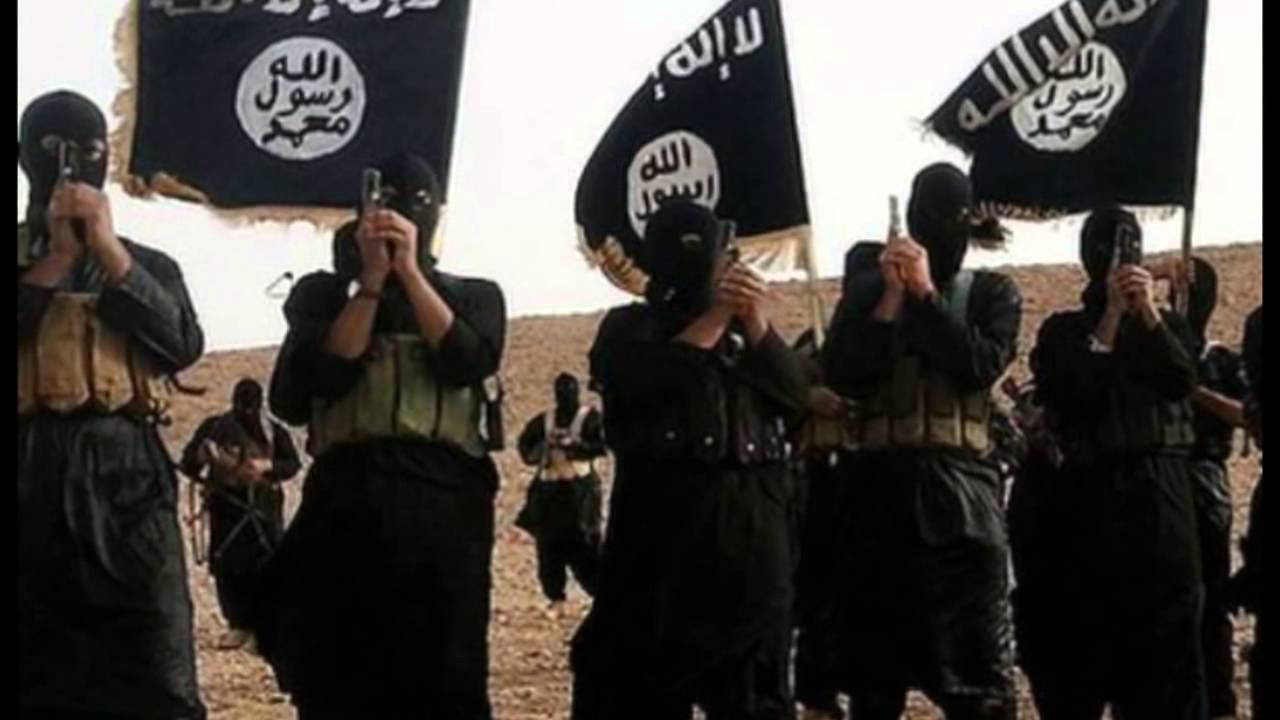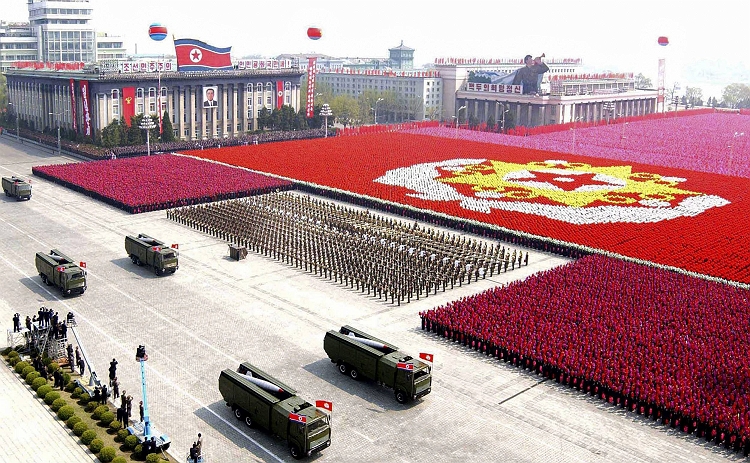
SAN DIEGO — Fifteen years after the terrorist bombing of the USS Cole (DDG-67) that killed 17 sailors, Navy ships and other deployed U.S. forces face real threat of attack by the Islamic State in Iraq and Syria (ISIS or ISIL), the former NATO supreme allied commander warned a defense conference in San Diego.
“We have an organization that has demonstrated they are highly innovative. I don’t rule out a Cole-like event,” retired Adm. James G. Stavridis told a breakfast audience kicking off the start of the three-day West 2016 conference, cosponsored by the U.S. Naval Institute and AFCEA International.
The Oct. 12, 2000, bombing of the Burke-class destroyer was attacked by two suicide bombers who approached the ship in a speedboat during a refueling stop in the port of Aden, Yemen. Another 39 sailors were wounded in the attack that investigators determined was planned by an al-Qaida cell and directed by Osama bin Laden.

“We see an organization that also would love to capture an American sailor or two,” said Stavridis, the former head of U.S. European Command and current dean of the Fletcher School at Tufts University Law and chairman of the board of the Naval Institute. “I think about our crews as they go ashore being extremely vulnerable in small groups.”
“I think the Islamic State would love the symbolic aspect of going after a ship at sea,” he said.
“It’s counter intuitive, but a ship, in my view, is at its most vulnerable not when it’s alongside the pier, not when it’s in the open ocean, but when it’s getting underway out to sea.” The Navy must be on alert, vigilant and prepared to counter the terror threat to its deployed forces.
The Islamic State uses technology and heavily relies on social networking to expand its global reach and spread its terrorist ideology, such as Facebook and its users numbering 1.5 billion people.

“It is the biggest bridge ever built. It is connecting a population greater than the largest nation on Earth,” Stavridis said.
“This is also a photograph of the command and control network of the Islamic State. he said, pointing out a global image highlighting location of Facebook users. “They are recruiting, prothelytizing, moving recruits and conducting operations on this social network.”
“The good news is, this is where we have the opportunity to move our messages — democracy, freedom, liberty — all the things we value,” he said. “We must get into this world, and we must do a better job of it. That is the bridge, maybe the most important bridge that we can build for our security.”
Iran, Syria and North Korea

With security and strategy are major themes for the three-day annual conference, Stavridis addressed and assessed the broader major transnational threats the U.S. faces.
Iran, much like the Persian Empire of centuries ago, remains “crafty and innovative,” he said, and a continued source of concern. “We recently had this heart-sickening moment watching our sailors on their knees in front of Iranian captors.”
“Whether or not the nuclear deal comes through, we have, in my view, unfinished business with the Islamic republic of Iran, and others do as well, including our strong Sunni allies in this region, led by Saudi Arabia who will face Iran in a geo-political war as well as a religious conflict between Sunnis in the Sunni bloc led by Saudis and the Shia block led by Iran.”
But Iran’s threat to the U.S. is surpassed by the ongoing danger from North Korea.
“The most dangerous of this world is North Korea. Why? Beause they have a young, untested, untried, morbidly obese, medically challenged leader, with a really bad haircut, who already has nuclear weapons” he said. “He just detonated one just over a month ago and, news flash, he has ballistic missiles,” including one launched a week ago.
Stavridis noted other pressing threats to U.S. security of the U.S. and its allies that remain front on the radar.
The ongoing civil war and attacks on civilians in Syria continue to spread the crisis throughout the region as hundreds of thousands of refugees flee across the sea and national borders. That’s created growing problems in nations grappling with the deluge of people and spreading threat from terrorist groups and population unrest.
“We ought to recognize the eastern Mediterranean is increasingly at a higher level of tension than the South China Sea,” Stavridis said, noting some 1.2 million refugees have fled in the past 14 months, a pace set to hit 2 million by year’s end. “Europeans are increasingly overwhelmed particularly in Greece, in Italy, the Balkans, even Germany, Austria, Sweden — nations with real capability and culture of welcoming refugees,” but some are pushing back.
Ukraine has suffered recent artillery strikes between rebels and Ukrainian forces. “We have been unable to conquer the strategic terrain,” Stavridis said, “which is the mind of Vladimir Putin, who continues to press outside the borders of Russia” including the annexation of Crimea. Putin has been using an effective mix of “hybrid warfare” with unnammed, marked troops, cyberwarfare and propaganda. “We have not seen the last of it,” he added.
Melting polar icecaps, he said, “will open a geo-political competition in the north. We’re going to see increasingly conflict and tension between Russia and the NATO nations that are on the front porch.”
The fight against terror networks includes tackling the illicit global drug trade, including poppy grown in Afghanistan that provides 90 percent of the U.S. heroin market. Narcoterrorism threatens U.S. and international security as “the money for this undermines fragile democracies and creates real pressure on nations throughout the world,” Stavrdis said. The money helps drug networks get advanced technology like semi-submersibles that help them move drugs, like a vessel intercepted by Navy and Coast Guard forces found to be carrying 10 tons of cocaine valued at $150 million.
That single endeavor building the sub and launching it with drugs might have cost the terror network $3 million to execute, he noted, making such drug-running a lucrative and highly profitable business that won’t go away easily.
“Where does that money go? It is used to finance violent extremism and to move more product, undermining all of our societies,” he said.
China

The threat from a rising China remains “a bubbling cauldron” with news this week of the emplacement of missiles on Woody Island in the South China Sea. The move echoes a comment made by Adm. Harry Harris, head of the U.S. Pacific Command, who said China is building “a wall of sand” as it expands and spreads its forces in the South China Sea contested by other nations in the region.
China’s “preposterous claim” they historically should dominate the South China Sea would be like Mexico saying it should own the Gulf of Mexico and Caribbean Sea, Stavridis said. “It is unsupportable in international law and will lead to conflict, not just between the United States and China but potentially other Asian partners.”
The U.S. must continue to build relationships and rely on its allies — and that includes India, “the most determinative rising power of the 21st Century. Not China,” Stavridis said. India will surpass China in population within 20 years, and its shared English language, strong connectivity to Western economies and foundation on democracy will make it “an important partner to the United States and, perhaps in this century, an ally.”
NATO

“NATO matters” too, he said. “It is an alliance; an attack on one is an attack on all.”
Coalitions, like the Combined Maritime Force helping counter piracy off Africa, are key to providing stability and sustaining those relationships. “Do we still need a traditional military? Absolutely,” Stavridis said. “There are real values on the maritime side” — the U.S. Navy, Marine Corps and Coast Guard — because “we go around walls.”
But “we don’t have enough” ships, he said, noting daily charts depicting the size and dispersal of the U.S. fleet. “We are going to face this challenge of numbers going forward.”
It’s not just more ships the U.S. military needs. “It’s time to start thinking about a cyber force,” said Stavridis, noting parallels in the birth of aviation and creation air forces. Cyber “will be a venue of real conflict going forward.”
Future forces will have a greater cyber component, and the retired admiral sees the future as a triad of cyber, unmanned systems and special operations forces. “That is a triad that we will use — hopefully — much, much more than we will use the strategic triad,” he added.





